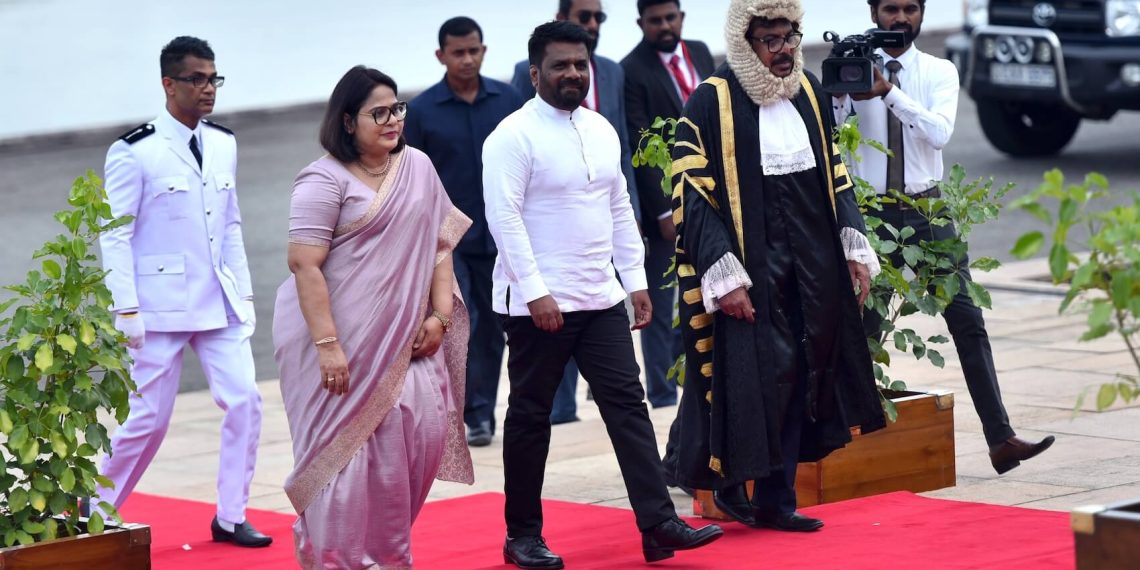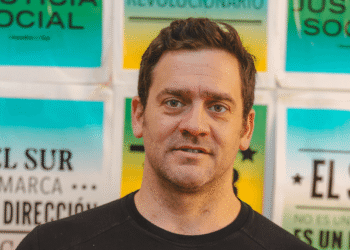Dr. Rajni Gamage highlights the decline of Buddhist civilizational populism in Sri Lanka, noting its diminished public resonance following the transformative 2022 protests. These protests, she explains, challenged both the political elite and Sinhala-Buddhist nationalism, creating a moment of reckoning. However, Gamage warns that if Anura Kumara Dissanayake’s government fails to deliver on its promises of progressive politics and economic recovery, opposition groups may exploit public discontent to revive Buddhist civilizational populism. “This phase of decline,” she says, “could shift if promises remain unmet, fueling alternative populist narratives.”
Interview by Selcuk Gultasli
In a thought-provoking interview with the European Center for Populism Studies (ECPS), Dr. Rajni Gamage, a Research Fellow at the Institute of South Asian Studies, National University of Singapore (NUS), offered an incisive analysis of Buddhist civilizational populism in Sri Lanka. She highlighted how this ideological force has shaped the country’s political and social dynamics, particularly its impact on the marginalization of minority communities.
According to Dr. Gamage, Buddhist civilizational populism, deeply intertwined with Sinhala-Buddhist nationalism, has historically emerged in waves. Currently, Sri Lanka appears to be in a receding phase, evidenced by a diminished public resonance and the reluctance of political movements to mobilize this rhetoric extensively. She attributed this decline, in part, to the transformative 2022 protests, which delegitimized both the political elite and hegemonic narratives like Sinhala-Buddhist nationalism.
Reflecting on the contemporary landscape, Dr. Gamage remarked, “The 2022 protests created a moment of reckoning, challenging not only the established political order but also the ideological frameworks that sustained it.” However, she cautioned that if the current government, led by Anura Kumara Dissanayake, fails to deliver on its promises of progressive politics and economic recovery, alternative opposition groups might capitalize on public discontent to revive Buddhist civilizational populism as a political tool.
In tracing the roots of this ideology, Dr. Gamage explored its colonial-era antecedents. She noted that early 20th-century Sinhala-Buddhist nationalism emerged as a reaction to British colonial rule, mimicking colonial logics to frame minority communities as inferior and responsible for the majority’s material impoverishment. These exclusionary tendencies, she argued, have persisted in post-independence Sri Lanka, finding renewed expression during the Rajapaksa regime.
Discussing the political trajectory of President Anura Kumara Dissanayake and the National People’s Power (NPP), Dr. Gamage underscored the transformative role of economic populism in their rise to power amidst the socio-economic fallout of the 2022 crisis. She observed, “The anti-establishment narrative of corruption and inequality was pivotal in mobilizing grassroots support.”
Dr. Gamage examined the broader implications of these populist narratives for Sri Lanka’s democratic governance. She warned that securitization efforts, such as anti-drug campaigns and moral panics, could risk undermining civil liberties while consolidating political power. The interview with Dr. Gamage not only sheds light on Sri Lanka’s evolving political dynamics but also offers critical insights into the interplay between populism, nationalism, and democracy in the context of economic and social crises.

Here is the transcription of the interview with Dr. Rajni Gamage with some edits.
Traces of Authoritarianism and Nationalism in Sri Lanka
Dr. Gamage, thank you very much for joining our interview series. Let me start with the first question. What historical periods did authoritarianism have in Sri Lanka? Can you explain the key themes and developments from a historical perspective?
Dr. Rajni Gamage: I think that’s a very pertinent question when we consider the current political moment in Sri Lanka. Looking at authoritarianism within politics and governance in Sri Lanka, we can identify several key historical periods shaped by distinct developments.
First, colonial legacies, especially British colonialism, left a significant imprint. During British rule, colonial powers consolidated authority in Ceylon (now Sri Lanka) through specific laws, the establishment of state institutions, and the deployment of ideological discourses aimed at maintaining their control. These authoritarian elements—embedded within institutions, laws, and ideologies—continued to influence the post-colonial state formation process in Sri Lanka.
The British colonial period is thus a critical moment to examine in the history of authoritarian politics in Sri Lanka. In the post-independence period, authoritarianism became intertwined with the democratic institutions formed after colonial rule. A key example is the executive presidency established under the 1978 Constitution. Significant scholarship highlights how this institution centralized power and legitimized authoritarian practices, reaching its peak during the Mahinda Rajapaksa regime from 2005 to 2015.
Another significant aspect of authoritarianism was its explicit manifestation during the ethnic conflict from 1983 to 2009. The militaristic approach to resolving the conflict culminated in the state’s victory in 2009, characterized by the dominance of majoritarian Sinhala-Buddhist nationalism. This ideology shaped both state governance and popular discourse during and after the civil war, fostering an exclusionary and hegemonic nation-building process. Consequently, many minority groups—whether ethnic, religious, or gender-based—were marginalized in the state’s formation and development.
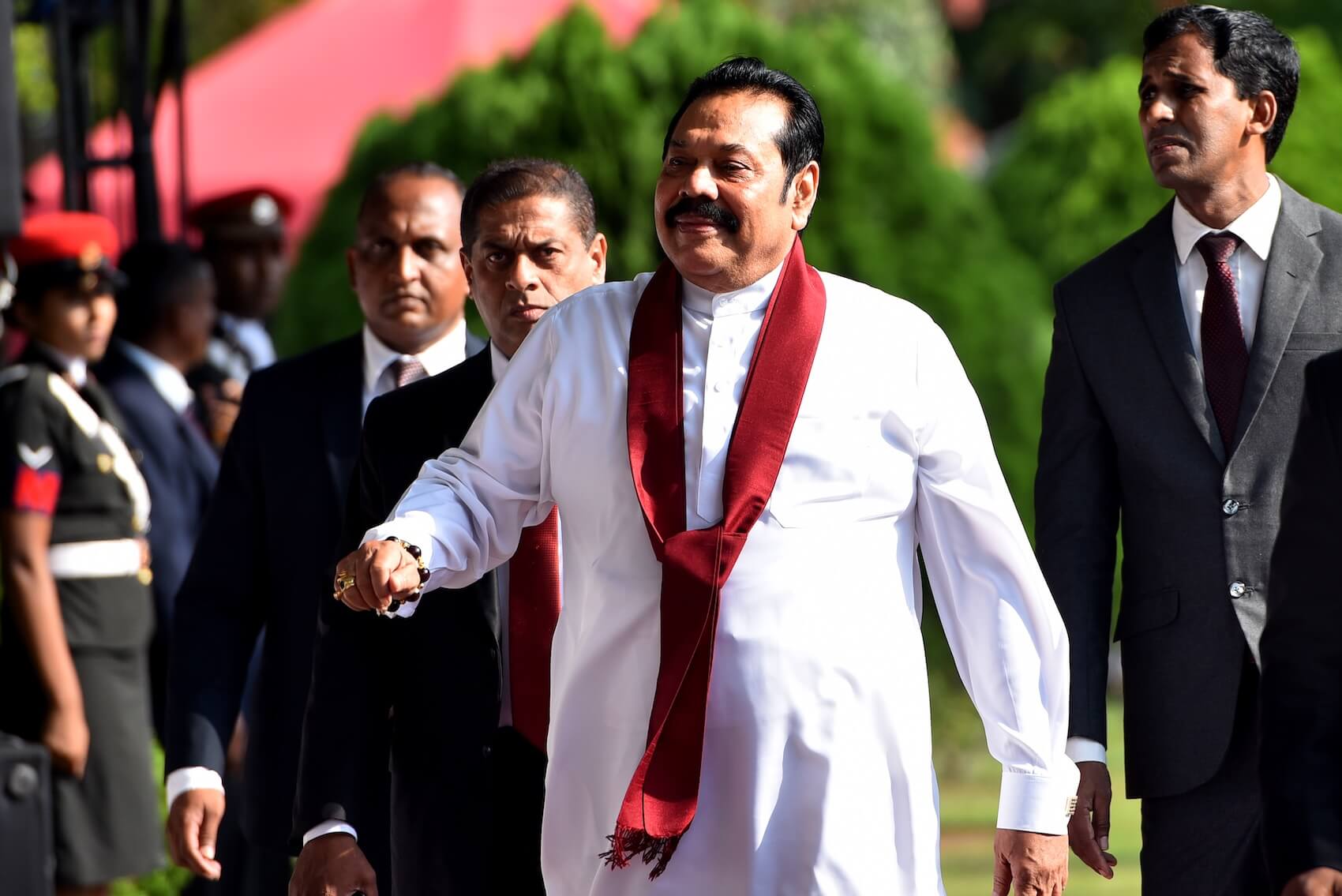
How has the historical encounter of Sinhala-Buddhist nationalism with colonial modernity shaped the exclusivist tendencies of contemporary Buddhist nationalist movements, such as the Bodu Bala Sena (BBS), particularly in framing the Muslim "Other"? In what ways has this discourse intersected with and reinforced the authoritarian populism observed during the Rajapaksa regime, contributing to the marginalization of minority groups in nation-building and the evolution of Islamophobia in recent years?
Dr. Rajni Gamage: When we examine Sinhala-Buddhist nationalism gaining significant momentum under the Rajapaksa regime, and compare it to the early 20th-century Sinhala-Buddhist nationalism spearheaded by figures like Anagarika Dharmapala, we can see a clear lineage. This early nationalism emerged as a reaction to the racial hierarchies and colonial logics imposed by British colonial forces at the time.
Nationalism was formed in response to the racial and developmental politics of the colonial administration. For example, early 20th-century Sinhala-Buddhist nationalism often mimicked colonial logics, identifying minority groups in Ceylon as inferior to the majority Sinhala group and as being responsible for the material impoverishment of the local population.
These exclusionary logics of Sinhala-Buddhist nationalism have continued to be reproduced in the post-colonial context. Under the Rajapaksa regime, particularly in the post-war period, the military victory over the ethnic conflict brought an increase in military jingoism and majoritarian nationalism, which received significant state patronage. Groups like the Bodu Bala Sena (BBS) gained momentum, especially with their amplified presence on social media, further marginalizing minority groups and fostering Islamophobia. The future trajectory of nationalism is perhaps something we could explore further in another discussion, but I will conclude here for now.
NPP’s Evolution Reflects Moderation in Economic Policies and Emphasis on Inclusivity
How do you interpret Anura Kumara Dissanayake’s presidential victory as a reflection of Sri Lanka’s populist political trends, particularly in the context of economic crises and disillusionment with traditional elites? What does this suggest about the relationship between economic instability and populism in the country and what does this signify for the future of populist politics in Sri Lanka?
Dr. Rajni Gamage: The election of Anura Kumara Dissanayake, the current president of Sri Lanka, occurred in the context of the 2022 economic crisis and the country declaring itself bankrupt. His presidential campaign was largely built on an anti-establishment narrative and an economic populist message of "us versus them," where the corrupt elite were portrayed as being in opposition to the ordinary people. This narrative proved to be very powerful, as it followed the largest economic crisis Sri Lanka has faced since independence. The crisis was widely attributed to a governance failure by a political elite seen as disconnected from the public and deeply corrupt—an elite accused of misusing and stealing public finances to the point of bankrupting the country.
Within President Dissanayake’s political rhetoric, we can clearly identify elements of economic populism. This is evident both in the issues he and his party highlighted and in the solutions they proposed. For example, during the campaign, we saw populist promises such as salary increases for public servants and tax cuts. However, it’s important to note that this form of economic populism did not start with President Dissanayake. We observed similar trends in earlier left-oriented governments from 1994, and even with Gotabaya Rajapaksa, the president elected in 2019 and later ousted by popular protests. Rajapaksa, too, was a populist politician, coming from outside the traditional establishment and running on a narrative of cleaning up a corrupt and inefficient political system.
Situating President Dissanayake’s populist politics within this longer trajectory of populism in Sri Lanka helps us understand its evolution and its potential future impacts.
The Janatha Vimukthi Peramuna (JVP) has evolved significantly from its past. What role has this transformation played in its appeal as part of the National People’s Power (NPP) coalition, and how does this align with global trends in left-wing populism? In your view, how has the JVP transformed its populist appeal to distance itself from its violent past, and what lessons can other populist movements learn from this evolution?
Dr. Rajni Gamage: I think this is a question that has sparked significant interest, especially among external observers of Sri Lankan politics. The coalition called the National People’s Power (NPP), formed in September this year, is primarily driven by the Janatha Vimukthi Peramuna (JVP), which, as you mentioned, is its main and only political party.
The JVP has a complex history, having led two Communist insurgencies in 1971 and 1988. After the failure of these uprisings, the party re-entered parliamentary politics in the 1990s. Historically, the JVP has been associated with revolutionary left-wing politics and Sinhala nationalist ideologies. However, the NPP is observed to have shifted towards the center in its economic policies, effectively positioning itself as a center-left party. This shift towards centrism and pragmatism has become more apparent, particularly since the NPP came into power.
Regarding issues of race and Sinhala-Buddhist nationalism, the NPP has adopted a much more progressive stance, including advocating for power devolution to minority-dominated areas. In terms of lessons for other populist parties, especially those seeking to access state power, the NPP’s evolution demonstrates that moderating economic policies and adopting a more inclusive approach can resonate more effectively with both the public and important international stakeholders, such as the International Monetary Fund (IMF).
The Clock Is Also Ticking for the Current Government
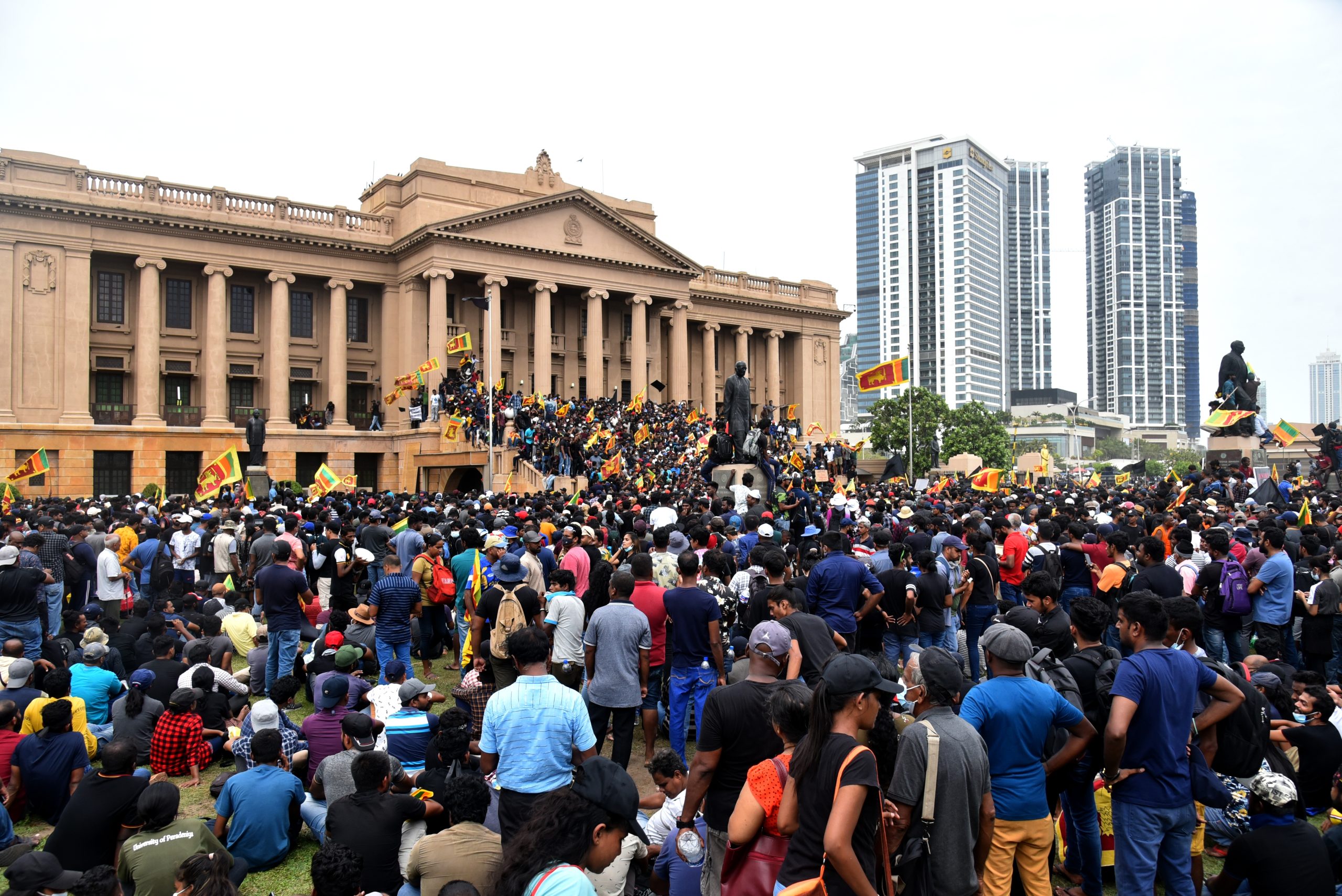
What is your assessment of the populist strategies used by Dissanayake and the NPP, particularly in mobilizing grassroots support through anti-corruption and transparency narratives? How sustainable are these approaches in governance? How does the NPP navigate the tension between economic nationalism and international obligations, particularly in the context of foreign policy and development projects?
Dr. Rajni Gamage: This kind of mobilization through an anti-corruption narrative is one of the key strategies that Dissanayake and his party effectively utilized during these elections. When we observe other examples of left-wing populist movements gaining popularity globally, this approach is not uncommon. Anti-corruption is a particularly powerful narrative. Within Sri Lanka itself, we’ve seen past governments, such as the Yahapalana government in 2015, rise to power on a good governance and anti-corruption platform.
However, as powerful as the anti-corruption narrative is, sustainability remains a critical question. When corruption is identified as the main problem, it implies that the current system can function with minor fixes to governance. This framing, on one hand, prevents broader discussions about structural reforms and, on the other, primes the public to expect immediate and short-term outcomes.
So far, the NPP government has demonstrated this to some extent. While there have been highly publicized low-level legal cases, significant progress on high-level corruption remains absent. Delivering accountability and justice on large-scale corruption involving powerful figures from the old political establishment is both politically challenging and legally complex. For instance, while the NPP has pledged to recover stolen assets from capital flight, the question remains whether the necessary legal frameworks are in place to enable the identification and recovery of such assets.
The clock is ticking for the current government. If it cannot deliver substantial economic growth in the short term, it must at least demonstrate progress on its anti-corruption mandate to maintain public trust and legitimacy.
How do you see the collapse of Tamil legacy parties and the emergence of new political actors reshaping Tamil nationalism within Sri Lanka’s broader political landscape? Could this fragmentation weaken or strengthen the Tamil political struggle?
Dr. Rajni Gamage: This is a significant development, especially in light of the recent parliamentary elections in Sri Lanka. For the first time in the country’s history, mainstream Tamil and Muslim political parties suffered considerable electoral setbacks. There are several reasons for this. One key factor is the fragmentation within these parties due to internal infighting. Additionally, there is a broader delegitimization of establishment parties, driven in part by the NPP and the powerful narrative of the 2022 popular protests. These protests highlighted the failures of the political establishment and criticized the state’s capture by a small elite.
This context has contributed to the setbacks faced by the legacy of Tamil and Muslim political parties. However, it is also important to note the emerging sentiment that Tamil nationalism, like Sinhala nationalism, is on the decline. This assumption, I believe, warrants closer scrutiny. Sri Lanka has experienced waves of nationalism throughout its history. While Sinhala nationalism appears to have slightly waned in the post-2022 period and did not emerge as a dominant campaign theme during the elections, history suggests that nationalism—both Sinhala and Tamil—tends to resurface in cycles. Therefore, it is reasonable to expect a resurgence of Tamil nationalism in the future, even as new political actors continue to reshape the landscape.
Risk of Social Unrest Rises Amid Revenue Growth Challenges
In light of Dissanayake’s pledges to renegotiate IMF loan terms and focus on economic recovery, what challenges and opportunities do you foresee in balancing populist promises with the realities of austerity-driven economic policies?
Dr. Rajni Gamage: During the campaign, similar to the other main opposition party, the SJB, the NPP was highly critical of the debt sustainability agreement (DSA) forming the framework for the IMF program. They argued that it was not negotiated on terms favorable to Sri Lanka, particularly for the working and poorer classes. One of the NPP’s key promises was that, upon coming to power, they would renegotiate the DSA’s terms to adjust conditions such as tax thresholds and revenue-raising measures.
However, the government has now been in power for over two months, and there are no clear indications that such renegotiations are underway. Instead, there has been notable continuity with the existing economic program, despite the previous Ranil Wickremesinghe government being arguably one of the most neoliberal in Sri Lanka’s history, and the NPP having campaigned on left-leaning economic policies.
The question of whether President Dissanayake can sustain austerity-driven policies under the IMF program while maintaining popular support remains crucial. Currently, the government enjoys a strong mandate and significant popularity. However, if it fails to generate sufficient revenue through alternative means—such as boosting domestic industrialization, tourism, and local cooperatives—social unrest similar to what previous governments faced may resurface.
Operation Yukthiya: Moral Panics as Tools of Political Control
What role does the securitization of issues like drug control and trade union action play in consolidating power under the current Sri Lankan government, and how does this framing of extrajudicial measures as tools for justice shape public opinion and political legitimacy, particularly through the creation of "moral panics" such as Operation Yukthiya, and how do these strategies align with broader patterns of populist governance globally?
Dr. Rajni Gamage: I think it’s a very common aspect of populist politics, whether right-wing or left-wing, to identify specific social dynamics and frame them as threats to society or as the root causes of material or security crises. This strategy allows populist leaders to consolidate power and redirect public attention.
During the Wickremesinghe government, we observed the introduction of campaigns like Operation Yukthiya, an anti-drugs initiative that created "moral panics" to legitimize an expanded role for the police and increase the securitization of social spaces. These strategies were framed as necessary for justice but often functioned to enhance political control and suppress dissent.
The current NPP government has indicated that it will continue with such programs. However, as I mentioned earlier, the current administration remains highly popular. Historically, we see governments resorting to creating or amplifying moral panics when their popularity begins to decline. Whether this government will emphasize issues like drug control or other security concerns to maintain its legitimacy will likely depend on shifts in its public support in the future.
How do populist narratives in Sri Lanka address or sideline ethnic and minority issues, and what implications does this have for long-term reconciliation and inclusive governance in the country? Are there similarities with other populist leaders across the World?
Dr. Rajni Gamage: This is a very important issue and one that is quite distinctive in the NPP’s left politics, especially when compared to past Sri Lankan left-nationalist politics. The "othering" of Tamil and Muslim minorities has historically been a popular political instrument used by past governments, including left-nationalist administrations such as the Mahinda Rajapaksa government, if we can characterize it as such.
However, the NPP was distinct in the 2024 elections for not mobilizing a strong Sinhala-Buddhist nationalist narrative. Instead, it advocated for greater ethnic inclusivity. This was evident in the November 2024 elections, where the NPP secured a mandate across the island, including in minority-dominated areas. This represents a unique moment for Sri Lanka, perhaps paralleling the political atmosphere of 1994, when a similarly inclusive national space was created.
In response to your question, while the NPP’s politics can be characterized as left-populist on an economic level, it has maintained a strong inclusive narrative regarding ethnic and religious groups. This is reflected in its proposals for a new constitution and its push for power devolution to smaller territorial units as a more sustainable solution for reconciliation. Whether these measures will provide a lasting resolution to the ethnic question in Sri Lanka, however, remains to be seen.
Timing Challenges Doom ‘One-Country-One-Law’ Initiative
How has ‘one-country-one law’ principle been instrumentalized by the political leaders in Sri Lanka in terms of democracy and civil liberties? How has securitization been employed by the political leaders to empower the police force? How do these populist narratives manipulate public frustration to justify anti-democratic measures, and what long-term risks does this pose to civil liberties?
Dr. Rajni Gamage: The "one-country-one-law" principle, to briefly explain for those unfamiliar with Sri Lanka, was a political campaign mobilized during the 2019 presidential elections. The idea was to address perceived heterogeneity within Sri Lanka’s legal framework, particularly concerning ethnic communities. For instance, there was the Muslim Marriage and Divorce Act (MMDA) and other legal regimes specific to certain communities. The argument was that there was a need to homogenize laws in Sri Lanka to promote equality.
However, underlying this drive was a strong Sinhala-Buddhist nationalist sentiment aimed at reinforcing the mandate of the majority ethnic group. The "one-country-one-law" initiative ultimately failed, largely due to the timing of its implementation. In 2019, Gotabaya Rajapaksa came to power with this mandate, but by 2020 the COVID-19 pandemic hit, followed by the economic crisis, preventing the campaign from gaining momentum.
While these sentiments suffered a significant defeat, especially after the 2022 protests, it is possible they could resurface if the current NPP government fails to meet the high expectations it has fostered. For example, in neighboring India, the idea of a uniform civil code has gained considerable public legitimacy. Whether such a mandate could re-enter Sri Lanka’s political discourse remains a possibility in the future.
How has the socio-economic fall-out in 2022 played into the hands of victory of Anura Kumara Dissanayake, leader of the leftist National People’s Power (NPP)?
Dr. Rajni Gamage: As I mentioned earlier, the economic inequality and dispossession of people were significantly exacerbated by the 2022 economic crisis. While Sri Lanka already had high levels of inequality and poverty, the crisis accelerated these issues dramatically. People felt the impact immediately, particularly due to the long hours of power cuts and disruptions in access to essentials like gas and fuel.
This economic crisis, which severely disrupted everyday livelihoods, fueled widespread anger and anti-establishment sentiment among the populace. People attributed their struggles to the poor governance of the political elite at the time. Anura Kumara Dissanayake effectively mobilized this anger, even though the NPP did not play a direct leadership role in the protests. The party skillfully channeled the public’s frustration, which contributed to their landslide victory in November.
Risk of Populist Resurgence Looms
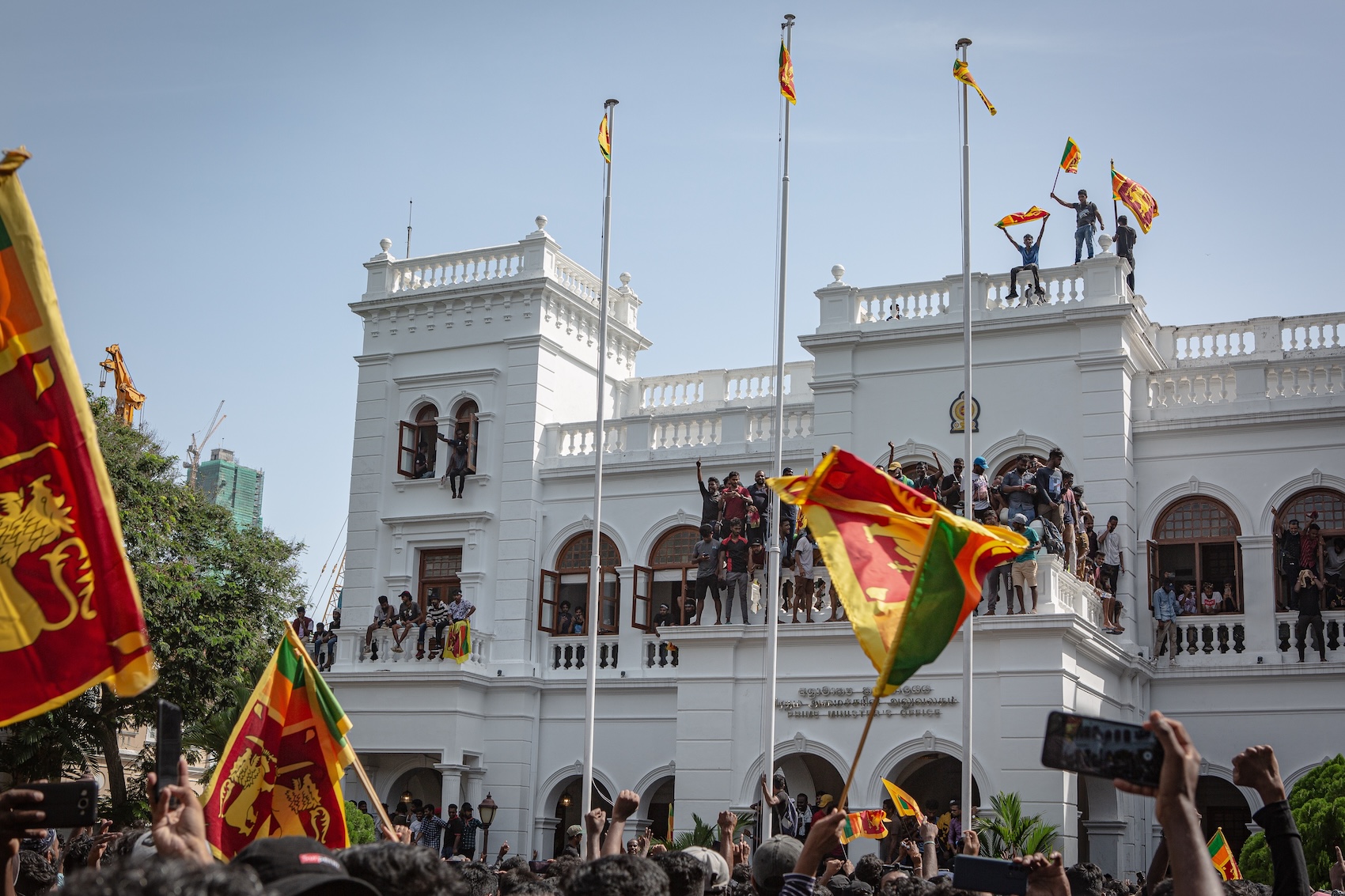
Given the global rise of religious and civilizational populism, what lessons can Sri Lanka draw from its history to foster inclusivity and prevent the recurrence of divisive politics in the context of current economic and social crises?
Dr. Rajni Gamage: The idea of civilizational populism refers to political actors identifying themselves and their state beyond the boundaries of the nation-state. In the context of pre-independence Ceylon, we observe certain nationalist leaders framing the island as a Buddhist civilizational state. This rhetoric legitimized the notion of a once-prosperous society and statehood—idealized as the birthplace of great ideas about governance and social organization—that had been lost. These leaders argued for a return to such a golden age, attributing its decline to colonial forces and the perceived collusion of ethnic minorities with those forces.
In the post-independence era, Sinhala-Buddhist nationalism has frequently drawn on civilizational populist narratives, even as it operates within the framework of the nation-state. These sentiments continue to feed into nationalist discourse, especially during times of economic and social upheaval. As Sri Lanka confronts its current economic crisis, there is an increasing tendency to invoke the idea of a broader, more successful Buddhist civilizational entity. This rhetoric becomes particularly appealing to leaders as the nation’s prospects seem diminished.
And lastly, Dr. Gamage, how has Buddhist civilizational populism shaped the political and social dynamics of post-war Sri Lanka, particularly in the othering of minority communities, and how does its contemporary manifestation compare with colonial-era Buddhist revival movements in terms of goals, rhetoric, societal impact and the enduring influence of colonial legacies?
Dr. Rajni Gamage: As I mentioned in a previous response, Buddhist civilizational populism certainly informs Sinhala-Buddhist nationalism, but it emerges in waves. Currently, we seem to be in a receding phase of nationalism. This is evident not only in the reluctance of political movements to mobilize it extensively but also in its diminished resonance with the public.
One reason for this decline is the 2022 protests, which not only delegitimized the political elite of that period but also discredited certain hegemonic narratives, including Sinhala-Buddhist nationalism. These protests created a moment of reckoning, where dominant ideologies were challenged alongside the established political order.
However, as you noted, the current government has presented itself as promoting progressive politics on the ethnic front while also making economically populist or left-leaning promises. If it fails to deliver on these fronts, there is a possibility that alternative opposition groups may seize the opportunity to re-mobilize Buddhist civilizational populism to gain political traction.

